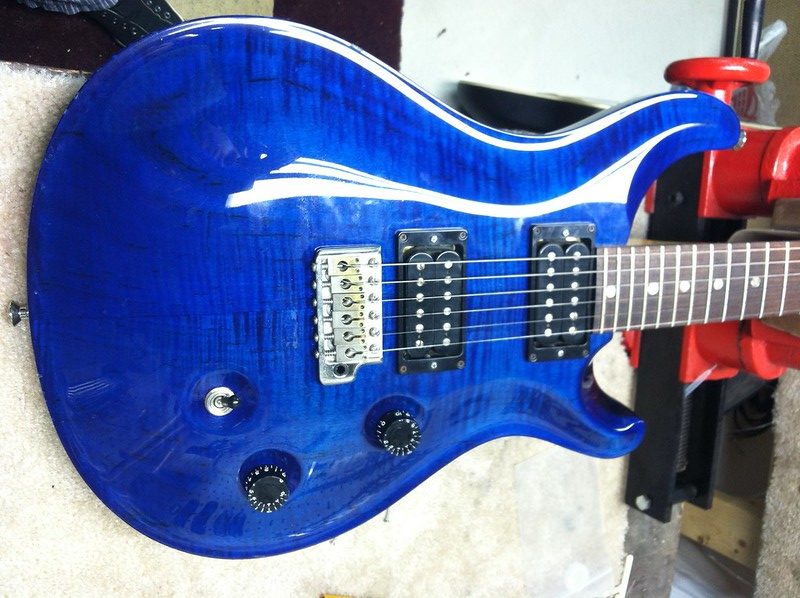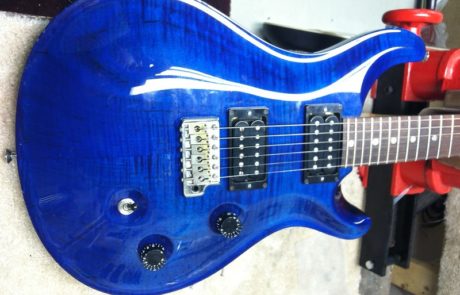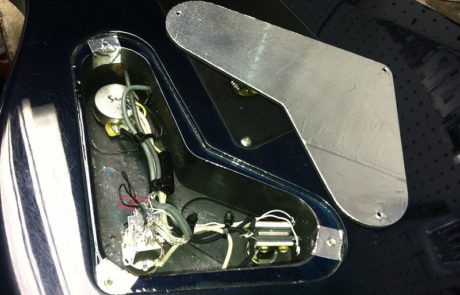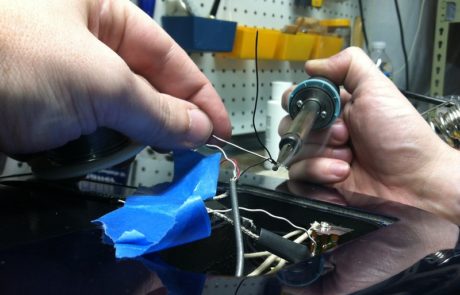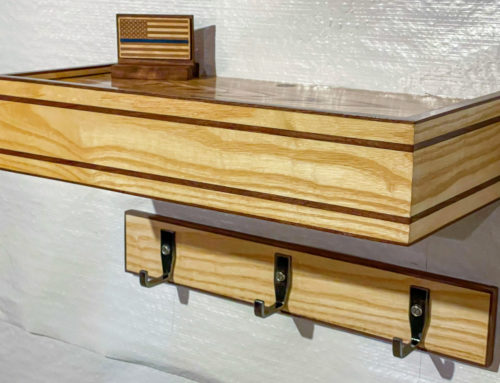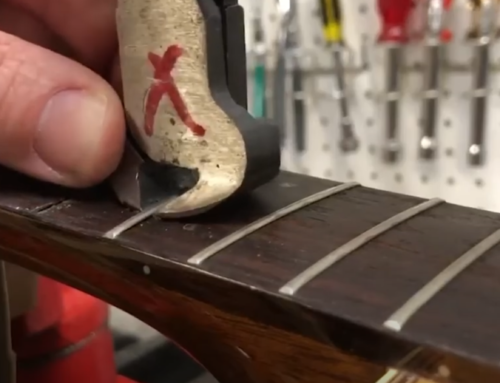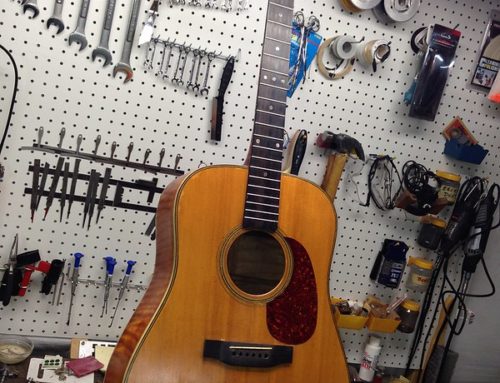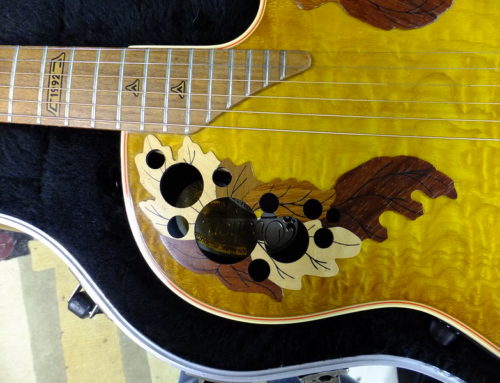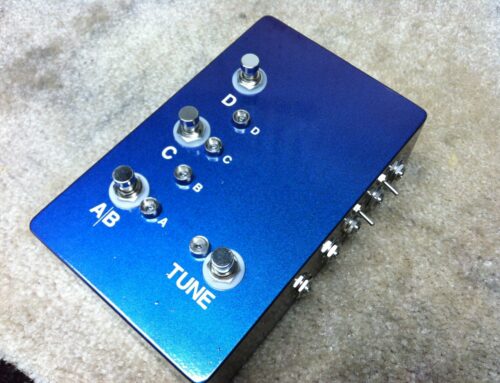This PRS CE-24 came into the shop with a dead volume potentiometer. After discussing it with the client we decided to replace all of the electronics (all less than superb components) with high quality Switchcraft and CTS components from RS Guitarworks located in Winchester, KY. I’ve known about these guys for a while, but this was this first time to try their products.
I was particularly intrigued by these components listed on their website:
500K RS Short-Shaft SuperPot®– We designed these pots in conjunction with CTS. Used for the volume controls in the kit, these pots have a custom taper that gives you a noticeable difference between each number on your volume control. You can finally roll your volume down to 2 or 1 and not loose any clarity, even in the neck position!! Mil-spec construction and a smoother resistor path make this the best pot to ever be used in the guitar.
RS .022 GuitarCap®– The GuitarCap® is the first and only capacitor designed specifically for the guitar. This part is the only capacitor in the world that meets our stringent quality-control standards, not only because of its construction, but because of how great it sounds in the tone circuit (more info on their site.)
The RS Guitarworks parts are not cheap. The Premium Modern PRS® Style Upgrade Kit that we ordered costs $69.45 plus shipping. While the kit does include CTS and Switchcarft parts and their $15 custom made capacitor for the tone knob, you are still paying a premium compared to similar components from Stewart-McDonald, Luthiers Mercantile or Allparts.
After installing the components, I can say that there is a significant increase of quality tone in the guitar. The taper on both the volume and tone knobs is very smooth with very little dramatic drop-off. And that $15 capacitor is rather nice sounding, too. Even with all of the high-end rolled off, there was still some nice presence to the tone that makes it very warm without being mushy. It’s not for everyone or for every guitar. But the buttery roll-off of the volume and tone pots are quite evident and adds precision to these controls that you don’t often find in guitar electronics.
Would we buy their components again? Bottom line: Yes.
On a side note with this particular project, we noticed that while the electronics cavity had been coated with shielding paint, however, the inside of the backplate was not coated in anyway. So we added some shielding tape and ensured that the tape connected with the guitar’s ground.
